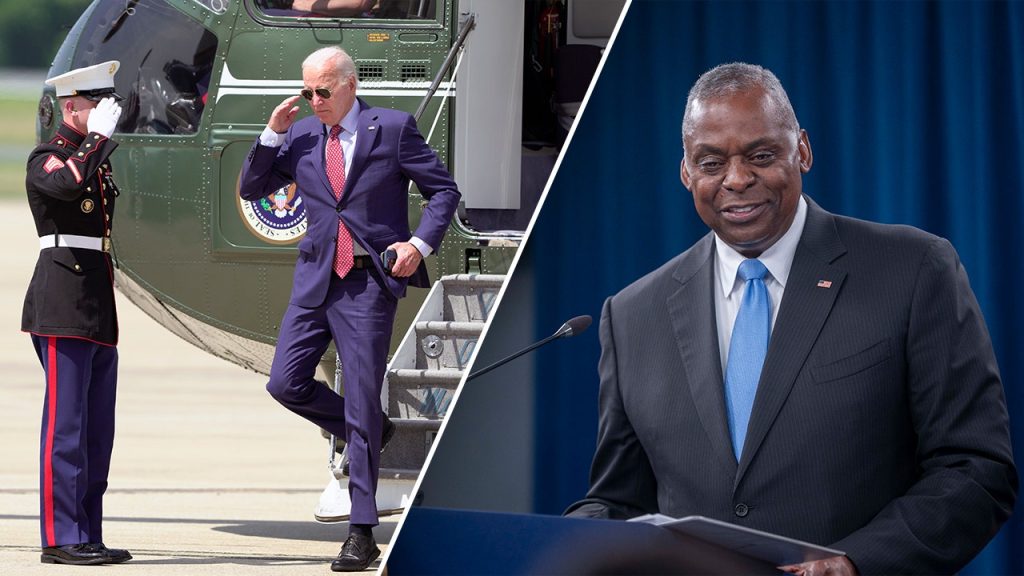U.S. Defense Secretary Lloyd Austin announced on Friday that military forces would be adjusting their postures in the Middle East following a strike in Iran that killed Hamas leader Ismail Haniyeh. As part of these adjustments, a fighter jet squadron will be moved to the region, and an aircraft carrier will be maintained there as well. Additionally, President Biden ordered additional ballistic missile defense-capable cruisers and destroyers to be sent to the Middle East as per a promise made to Israeli Prime Minister Benjamin Netanyahu. The Pentagon’s release stated that the USS Abraham Lincoln Carrier Strike Group would replace the USS Theodore Roosevelt Carrier Strike Group in the Central Command area of responsibility to maintain a carrier strike group presence in the region.
The decision to enhance defenses in the Middle East was made in response to the recent deaths of Hamas leader Ismail Haniyeh in Iran and senior Hezbollah commander Fouad Shukur in Beirut. The Pentagon’s release did not specify where the squadron or the aircraft carrier would be based in the region. In the midst of these developments, the United States is also actively working on de-escalating tensions in the region and pushing for a ceasefire as part of a broader effort to bring hostages home and end the war in Gaza. The move to expand capabilities and presence in the Middle East aims to maintain stability and security amidst the ongoing conflicts and geopolitical tensions in the region.
Following the strike that killed Ismail Haniyeh, Turkey sparked outrage by lowering its flag to half-mast at the embassy in Israel in honor of the deceased Hamas leader, drawing criticism from other nations. The incident highlighted the complex and delicate nature of relations in the Middle East, where different factions and countries often have conflicting interests and allegiances. The regional dynamics are further complicated by longstanding rivalries and conflicts, such as the Israel-Palestine conflict and the Iran-Saudi Arabia rivalry. The actions of various countries in the region can have far-reaching implications and further exacerbate existing tensions.
President Biden’s decision to send additional ballistic missile defense-capable cruisers and destroyers to the Middle East underscores the United States’ commitment to its allies in the region and to maintaining stability and security in the face of escalating tensions. The move is also a response to requests from Israeli Prime Minister Benjamin Netanyahu and aims to enhance the defense capabilities in the region in light of recent developments. The U.S. military’s presence and capabilities in the Middle East play a crucial role in deterring potential threats and ensuring the safety and security of U.S. interests in the region. The latest adjustments in military postures are a part of a broader strategic effort to address emerging challenges and maintain peace and stability in the Middle East.
The death of Hamas leader Ismail Haniyeh in Iran and senior Hezbollah commander Fouad Shukur in Beirut have further heightened tensions in the region and raised concerns about potential retaliatory actions and escalation of conflicts. The U.S. military’s posture adjustments in response to these developments seek to address the evolving security situation in the Middle East and reinforce the U.S. commitment to peace and stability in the region. The deployment of additional defense capabilities and assets reflects the U.S. government’s proactive approach to managing crises and preventing further escalation of conflicts. By maintaining a strong and visible presence in the region, the U.S. aims to deter potential aggressors and protect its allies from external threats.
In conclusion, the recent decision by U.S. Defense Secretary Lloyd Austin to adjust military postures in the Middle East following the deaths of key leaders in the region underscores the complex and volatile nature of the geopolitical landscape in the Middle East. The deployment of additional defense capabilities and assets reflects the U.S. government’s commitment to supporting its allies and maintaining stability and security in the region. The move comes amidst escalating tensions and conflicts in the region, underscoring the importance of a proactive and strategic approach to addressing emerging challenges and deterring potential threats. The U.S. military’s presence and posture adjustments aim to ensure the safety and security of U.S. interests in the region while also working towards de-escalating tensions and pushing for a ceasefire to end the ongoing conflicts in the Middle East.















